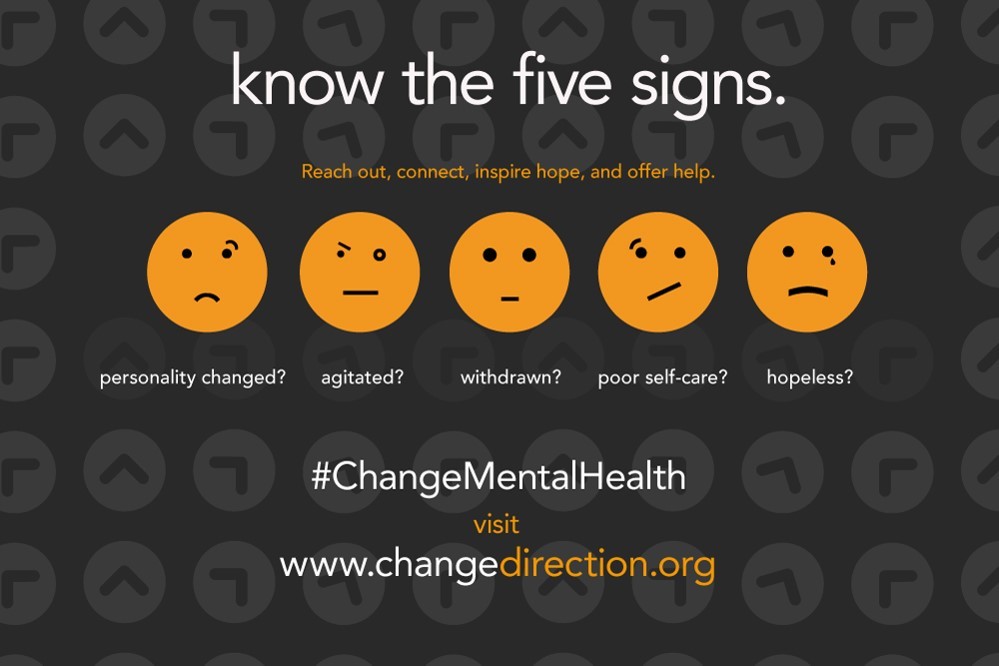This post is the first entry for Part I of the Mentally Healthy resource guide for UP faculty and academic staff working with students who might have mental health concerns.
There is, unfortunately, no magic formula for knowing when a student you know is in serious psychological distress. For one thing, all students experience some degree of stress – that is normal, and even helpful for motivation. For another, distress exists on a continuum – from mild to severe. Even professional mental health practitioners have to make informed judgment calls about when distress moves from normal to abnormal; as a member of the faculty or academic staff your job is not to make such judgments. Instead, faculty and academic staff can best serve students by simply being aware of some of the potential markers of distress and the resources that can help students of concern.
In my PSY 101 class, I share with students a simple system from a national public health campaign called The Campaign to Change Direction with “Five Signs” of emotional suffering: personality changes; agitation; withdrawal; poor self-care; and hopelessness. Withdrawal can be particularly tricky for faculty and academic staff – when a student stops showing up for class, we often have no idea what has happened. But it is usually worth erring on the side of caution – check in with the student, and if you don’t hear back consider submitting an early alert. Though UP has lots of good systems in place to make sure students are connected, for some few students classes may be their only real point of contact with the UP community.

(see also a prior Teaching & Learning Community Blog post on the Campaign to Change Direction)
The Cornell University handbook for faculty upon which this on-line resource is modeled has a somewhat more elaborate listing of ‘indicators of distress’ ranging from Academic Indicators to Behavioral and Emotional Indicators to Physical Indicators.

I’d particularly highlight here under ‘Other Factors’ the simple idea of a “hunch or gut-level reaction that something is wrong.” Faculty and academic staff at UP have many students to attend to, and we can’t be solely responsible for them all. But we do tend to pay attention and over the course of the semester get to know students’ dispositions. If your gut tells you something might be wrong and a student might be of concern, go with that hunch – check in with the student, consult with the Health and Counseling Center, or submit an Early Alert.
Finally, the Cornell handbook also emphasizes that in some cases students will make explicit or implicit statements (including, sometimes, in written work) that indicates potential suicidal ideation. In these situations it is particularly important to contact the Health and Counseling Center (503.943.7134) and/or Public Safety (503.943.4444) depending on the immediacy.
Also remember that your job as faculty and academic staff is not to try to be a para-professional counselor; instead your job is to help students take advantage of resources that allow them to be well and to learn in a way that meets their potential. The two key UP resources towards that end are:
- The Health and Counseling Center (503.943.7134), where staff is always available to consult on questions about students and where after-hours calls are forwarded to a professional counseling service 24 hours a day.
- Early Alert, which is a system put into place for referrals of students who might need additional attention in a variety of domains.
Finally, remember that if a student is in crisis or at immediate risk of harm your first calls should be to Public Safety (503.943.4444) or 911.
